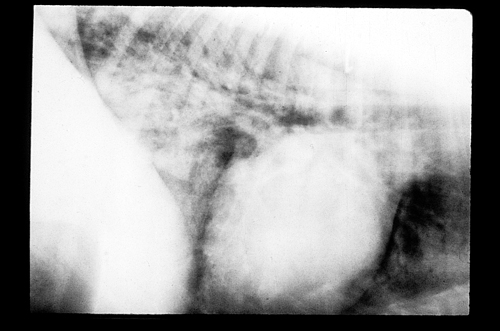Difference between revisions of "Small Animal Emergency and Critical Care Medicine Q&A 07"
| (One intermediate revision by one other user not shown) | |||
| Line 1: | Line 1: | ||
| + | {{Template:Manson | ||
| + | |book = Small Animal Emergency and Critical Care Medicine Q&A}} | ||
| + | |||
| + | |||
[[Image:ECC 07.jpg|centre|500px]] | [[Image:ECC 07.jpg|centre|500px]] | ||
| Line 31: | Line 35: | ||
Irritation from smoke and hot particles can promote the development of ARDS and decrease mucociliary function, thus predisposing the victim to developing bronchopneumonia. | Irritation from smoke and hot particles can promote the development of ARDS and decrease mucociliary function, thus predisposing the victim to developing bronchopneumonia. | ||
|l3=Carbon Monoxide Poisoning | |l3=Carbon Monoxide Poisoning | ||
| − | |||
</FlashCard> | </FlashCard> | ||
Latest revision as of 17:38, 30 September 2011
| This question was provided by Manson Publishing as part of the OVAL Project. See more Small Animal Emergency and Critical Care Medicine Q&A. |
A four-year-old, castrated male Schnauzer is presented after it had been rescued from a house fire. On presentation the dog has a RR of 45 bpm, with an increased inspiratory effort and moderate distress.
| Question | Answer | Article | |
| The dog’s mucous membranes are bright red. What is the significance of this observation? | The bright red mucous membranes suggest carbon monoxide toxicity. Carbon monoxide displaces oxygen on hemoglobin molecules, forming carboxyhemoglobin complexes and leading to tissue hypoxia. |
Link to Article | |
| What is your initial therapeutic plan? | Supplementation with 100% oxygen reduces the half-life of the carboxyhemoglobin complexes from 4 hours (t1/2 on room air) to 30 minutes. Oxygen should be humidified to promote mucociliary clearance and prevent drying injuries to the airways. Steroids are contraindicated unless severe edema and upper airway swelling exist. Smoke inhalation patients may also have significant cutaneous burns as well, and they should be treated aggressively with i/v fluids, wound care and nutritional support. |
Link to Article | |
| What complications should you anticipate, and how would you monitor for them? | Heat injuries to upper airways can lead to swelling, edema, laryngeal spasm and potentially to upper airway obstruction. Irritation from smoke and hot particles can promote the development of ARDS and decrease mucociliary function, thus predisposing the victim to developing bronchopneumonia. |
Link to Article | |
